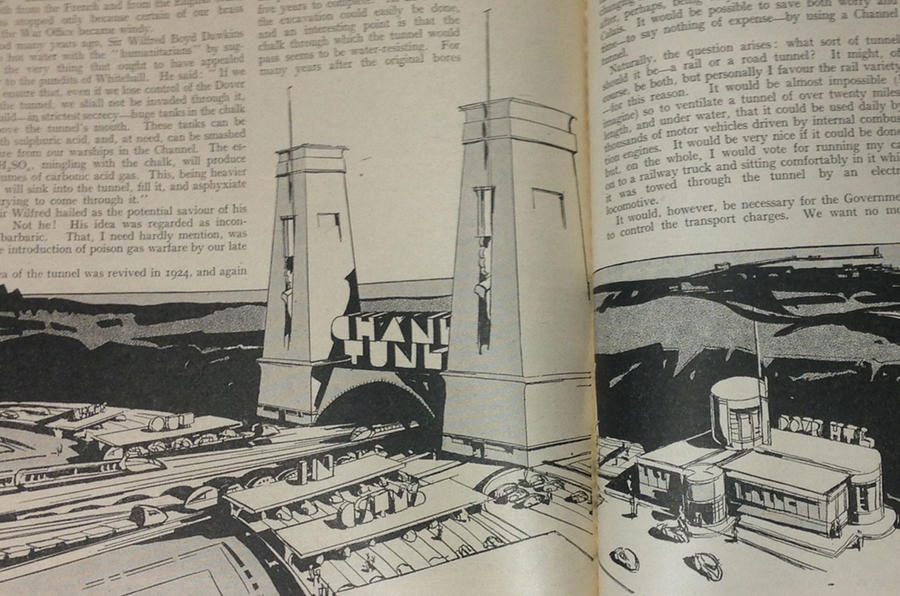The Channel Tunnel has now been around for long enough that to many it seems almost unremarkable. Certainly for me it does – it’s been in existence longer than I have, and it’s something I take for granted.
The idea of a tunnel linking Britain and France was published as early as 1802 and probably dreamt of long before that.
From there, it’s a long and stuttered history. A formal proposal was agreed in 1874, fell through, and another made in 1929 but rejected as too costly, before another agreement was made in 1964. Studies then took place before the construction proper started in 1974. Less than a year later, the new Labour Government cancelled the project.
The new Conservative Government rejuvenated the idea in 1979 and the Channel Tunnel Group was founded in 1985. Construction began again in 1988.
The tunnel opened in 1994. It had cost £4.650 billion, or around £13bn today (80% over budget).
Back on 9 August 1935, Autocar argued the case for the tunnel.
“What a good thing it would be if police doctors were to abandon the time-honoured ‘British Constitution’ as a test of sobriety and substitute the words ‘Channel Tunnel’,” we began.
“The point is that to adopt the phrase would be to accustom the more hilarious members of the community – and through them the public at large – to the great notion of burrowing to France.”
We then laid out a short history of the tunnel idea: “The project was approved in principle, on both sides of the channel, in 1874. Indeed, boring actually began about that time both from the French and from the English coast, and was stopped only because certain of our brass hats at the War Office became windy.”
In fact, such was the attitude of the time that during the 1880s, one Sir Wilfred Boyd Dawkins had an ‘inconceivably barbaric’ idea, in his words: “If we want to ensure that, even if we lose control of the Dover end of the tunnel, we shall not be invaded through it, let us build – in strictest secrecy – huge tanks in the chalk cliffs above the tunnel’s mouth. These tanks can be filled with sulphuric acid, and, at need, can be smashed by gunfire from our warships in the Channel. The escaping H2SO4 mingling with the chalk, will produce huge volumes of carbonic acid gas. This, being heavier than air, will sink into the tunnel, fill it, and asphyxiate anyone trying to come through it.”
Interesting…





Add your comment